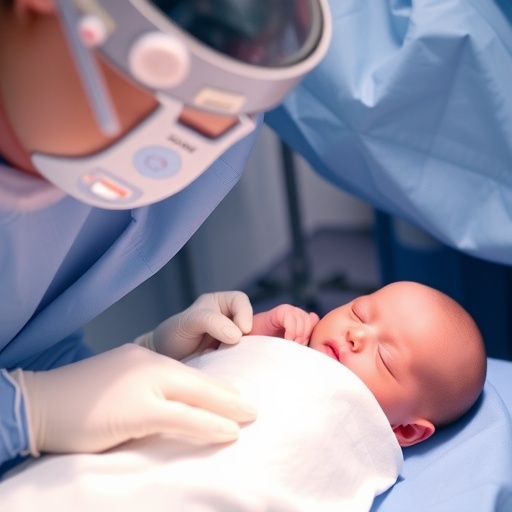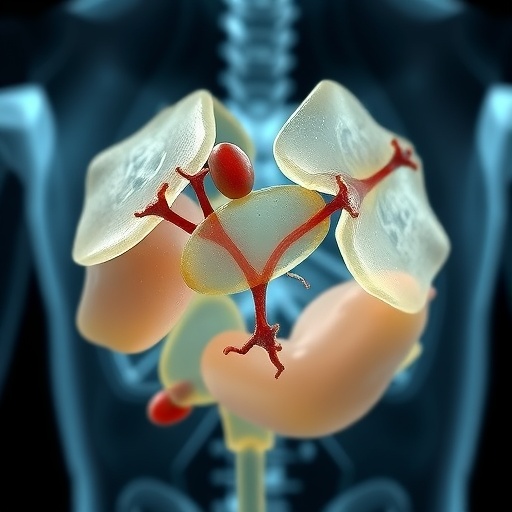
In the delicate and highly specialized field of neonatal surgery, the prevention of surgical site infections (SSIs) remains a critical challenge, influencing both immediate outcomes and long-term health trajectories of vulnerable newborns. A groundbreaking multicenter retrospective observational study, recently published in the Journal of Perinatology, offers revealing insights into how the duration of prophylactic antibiotic usage impacts the rate of SSIs in neonatal patients. This comprehensive investigation sheds new light on optimizing antibiotic stewardship in neonatal surgical care, a topic of growing urgency amid rising concerns over antimicrobial resistance and the fragile physiology of neonates.
Neonates undergoing surgical procedures are uniquely susceptible to infections due to a combination of immature immune systems, reduced skin barrier integrity, and the invasive nature of surgeries. Prophylactic antibiotics have long been administered to mitigate these risks, but striking the ideal balance between adequate protection and overuse is complex. Excessive antibiotic exposure not only fosters resistance but can also disrupt the developing microbiome, potentially precipitating future complications. Conversely, insufficient prophylaxis may leave these infants vulnerable to severe infections that can dramatically increase morbidity and prolong hospital stays.
The study spearheaded by Sunouchi and colleagues synthesized data from multiple centers to analyze correlations between the duration of prophylactic antibiotic administration and SSI rates after neonatal surgeries. By leveraging a robust dataset across varied hospital settings, the authors accounted for differences in patient demographics, surgical types, and institutional protocols. Their methodological rigor provides a valuable benchmark for evidence-based clinical guidelines, addressing an area previously dominated by heterogeneous practice patterns and limited conclusive evidence.
At the heart of their analysis lies the delineation of antibiotic duration thresholds. The neonatal patients were stratified into groups receiving short-term prophylaxis, generally defined as antibiotics given for 24 hours or less postoperatively, versus those receiving extended courses beyond this timeframe. Intriguingly, the findings challenge the traditional notion that longer antibiotic courses necessarily confer superior infection prevention. Instead, a shorter duration sufficed in achieving similarly low SSI rates while reducing potential harms related to prolonged antibiotic exposure.
From a microbiological perspective, the reduction in surgical site infections with optimized shorter antibiotic protocols may arise from minimizing selective pressures that encourage resistant organisms to emerge in the neonatal milieu. The study highlights that unnecessary extensions in prophylaxis do not provide incremental antimicrobial benefit but may paradoxically increase the colonization of multidrug-resistant pathogens. This revelation underscores the delicate balance clinicians must maintain to both protect their patients and safeguard future antibiotic efficacy.
The study further expounds on the variability of surgical categories, recognizing that certain procedures inherently pose higher infectious risks due to factors like intra-abdominal entry, longer operative times, or the presence of prosthetic materials. Even within these higher-risk surgeries, the data suggest that meticulously timed and limited prophylactic regimens maintain effectiveness. This nuanced understanding equips surgical teams with the confidence to curb antibiotic use without compromising safety—a pivotal shift amid growing global antimicrobial stewardship efforts.
An additional element addressed is the differentiation between superficial and deep surgical site infections, complications with varying clinical implications and management strategies. The study’s granularity in tracking these outcomes allows for careful assessment of whether reduced antibiotic duration disproportionately affects one type over the other. Results indicate a consistent benefit in controlling both superficial and deep SSIs, reinforcing the robustness of shorter prophylaxis courses.
The implications of this research extend beyond the immediate postoperative period. Reducing unnecessary antibiotic exposure in neonates may lower incidences of antibiotic-associated adverse effects such as nephrotoxicity, ototoxicity, and disruption of gut microbiota. Given that neonatal microbial colonization patterns profoundly influence immune maturation and metabolic health, clinical decisions about antibiotic duration resonate far into the infant’s future wellbeing, shaping risk profiles for allergies, asthma, and even neurodevelopmental disorders.
The findings also align with evolving international guidance that increasingly advocates for minimizing antibiotic duration in various surgical contexts. In neonatal surgery, this evidence base had been relatively sparse, often leading to conservative practices favoring extended prophylaxis “just in case.” By providing compelling multicenter data, this study emboldens revisions of neonatal surgical protocols to reflect best practices grounded in robust outcomes science.
Importantly, the study does not advocate for indiscriminate reduction of antibiotics but emphasizes patient-tailored approaches factoring in specific risks such as prematurity, sepsis risk profiles, and institutional infection control standards. This stratification ensures that clinical judgment remains paramount, integrating these new insights into a comprehensive framework rather than rigid mandates.
From a healthcare system perspective, reduced antibiotic durations translate into not only improved patient safety but also significant cost savings by decreasing drug costs, shortening lengths of stay associated with infections, and mitigating downstream complications that necessitate intensive treatments. The ripple effects encompass better resource allocation and potentially reduced antimicrobial resistance on a population level.
The retrospective design of this investigation, though inherently subject to limitations such as potential confounding factors and reliance on existing medical records, benefits from large sample sizes and cross-institutional collaboration, enhancing its external validity. Future prospective randomized controlled trials could further solidify these conclusions and explore mechanistic insights into immune responses influenced by antibiotic timing.
Technological advancements in perioperative care, including real-time infection surveillance and microbiome profiling, may complement these findings by facilitating individualized antibiotic stewardship. Integration of such precision medicine approaches will likely represent the next frontier in neonatal surgical infection prevention, building on the foundation laid by this pivotal study.
Critically, this research ignites a conversation among neonatologists, pediatric surgeons, infectious disease specialists, and pharmacists, uniting multidisciplinary teams around a shared goal: protecting the most vulnerable patients through judicious and scientifically informed antibiotic use. As antimicrobial resistance increasingly threatens global health security, optimizing every instance of antibiotic administration becomes a moral imperative.
The long-lasting influence of this study extends beyond neonatal surgery, providing a paradigm applicable to other high-stakes surgical populations where infection prevention must be balanced against minimizing collateral harms. It challenges entrenched clinical dogmas, inviting clinicians to rethink prophylaxis duration with the dual aims of safety and stewardship.
In conclusion, Sunouchi et al.’s multicenter retrospective study significantly advances neonatal surgical care by demonstrating that shorter prophylactic antibiotic courses effectively reduce surgical site infections without the drawbacks associated with prolonged use. This work stands as a clarion call to revise established protocols, harmonize practices across institutions, and ultimately improve outcomes for neonates worldwide. The nexus of clinical prudence and scientific rigor embodied in this study heralds a new era of neonatal perioperative antibiotic management that is both evidence-driven and patient-centered.
Subject of Research: Impact of prophylactic antibiotic duration on surgical site infection rate in neonatal surgery
Article Title: Impact of prophylactic antibiotic duration on surgical site infection rate in neonatal surgery: a multicenter retrospective observational study
Article References:
Sunouchi, T., Fujishiro, J., Oba, K. et al. Impact of prophylactic antibiotic duration on surgical site infection rate in neonatal surgery: a multicenter retrospective observational study. J Perinatol (2025). https://doi.org/10.1038/s41372-025-02400-3
DOI: https://doi.org/10.1038/s41372-025-02400-3
Tags: antibiotic stewardship in neonatal careantimicrobial resistance in newbornsbalancing antibiotic use in surgeryimpact of antibiotics on microbiomeneonatal immune system vulnerabilitiesneonatal surgery infectionsneonatal surgical outcomesoptimizing antibiotics in surgeryprophylactic antibiotic durationreducing infection rates in neonatesretrospective observational study in pediatricssurgical site infections in neonates





